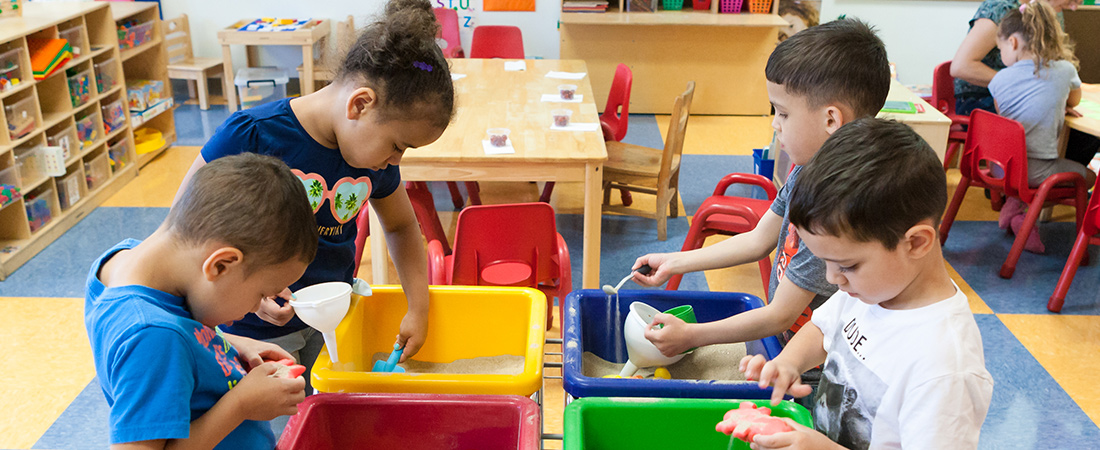Delivering SEL Support

As the coordinator of social and emotional learning at Learning First Charter Public School in Worcester, Massachusetts, Lauren Reppucci pays close attention to the behaviors and mental health needs of her students. And two years ago, she became concerned about what she was seeing.
“We were seeing a lot of ‘bigger behaviors,’” such as tantrums and repeated office referrals for disruptive behavior, Reppucci says.
The fact that students were acting out in the classroom did not surprise Reppucci. Many Learning First students have experienced trauma, live in unstable home environments, or struggle with anxiety and depression—all of which can impact students’ mental health and behaviors. She also notes that 91 percent of the student body identifies as Black or Hispanic, two communities that have historically been underserved by medical and mental health services.
What worried her, though, was the consistency and number of these outburst. Students were struggling, and the structures that the school had set in place to support them simply were not working.
“It was a schoolwide issue,” says Reppucci. “We knew we needed to improve and be more proactive in the way that we were addressing students’ mental health needs.”
For assistance, Reppucci and a team from Learning First joined the Social and Emotional Learning & Mental Health Academy, a project funded by the Massachusetts Department of Elementary and Secondary Education and operated by EDC. Created in 2019, the Academy is currently helping 50 school and district teams from across the state implement multi-tiered systems of support (MTSS) to better support all students’ mental health needs.
Shai Fuxman, who directs the Academy, says that many districts want to improve their social and emotional learning (SEL) and mental health services for students, but they often fail to organize and coordinate them into one coherent system of supports. In some cases, teachers do not know how to refer students for extra mental health or behavioral support. In others, communication between specialists and classroom teachers simply breaks down, meaning that students receive disconnected supports or fall through the cracks.
Through group trainings and individualized technical assistance provided by staff from EDC and Transforming Education, the Academy helps school and district teams better align their services. For example, teams learn about resource mapping, which refers to the process of inventorying and mapping out the different ways students can get mental health services. Fuxman says that this strategy helps schools identify the gaps they may have in their SEL and mental health delivery systems.
“A lot of schools have all the different parts they need—they have the SEL programs and they have the mental health coordinators—but it’s not organized into a cohesive system,” says Fuxman. “The real work is putting the pieces together to create a fully functioning program.”
He likens the task of creating a robust, school-based SEL and mental health program to building a table from IKEA.
“When you buy that table, you have all the parts you need in that box,” Fuxman says. “But you still have to put them all together to make the actual table.”
Participating in the Academy has helped Reppucci and her colleagues better join the distinct structures they already had in place. Through resource mapping, they realized that Learning First had a number of “really good resources,” but that they “weren’t systematically connected.” Improving student services required improving how those systems, and the staff who used them, talked to each other.
A new schoolwide referral and intervention process, a set of standard practices by which students can be identified as needing mental health support, went live in November 2019, a few months after Learning First joined the Academy. The process makes it possible for any member of the school community—including parents, teachers, and support staff—to initiate the process of help-seeking on behalf of a student.
Once the request is made, “we have our psychologist, our guidance counselor, our behavior specialist, and our administration” look into it, says Reppucci. The coordination among all of these skilled professionals allows the school “to quickly address [the concern] and implement the right intervention to support that student.”
The referral and intervention process has been instrumental in supporting students during the past year of remote learning. The process has allowed the school to identify the needs of individual students—many of whom experienced loss of loved ones, homelessness, or acute mental health events during 2020—and develop support plans, such as outside counseling, check-ins with a trusted teacher, or short-term tutoring. Learning First is also now partnering with a local mental health provider to offer a weekly grief group for families after schoolwide data from the referral system revealed that a high number of families had experienced loss during the pandemic.
Reppucci says that the new approach has remedied some of the service delivery gaps that the school was previously experiencing. And with students soon returning to the school building after a year of remote learning, she anticipates that the demand for student mental health services will increase. However, she also feels confident in the school’s ability to deliver the support and care that students will need.
“We’re going to stay with what we’ve been doing because it’s been working,” Reppucci says.